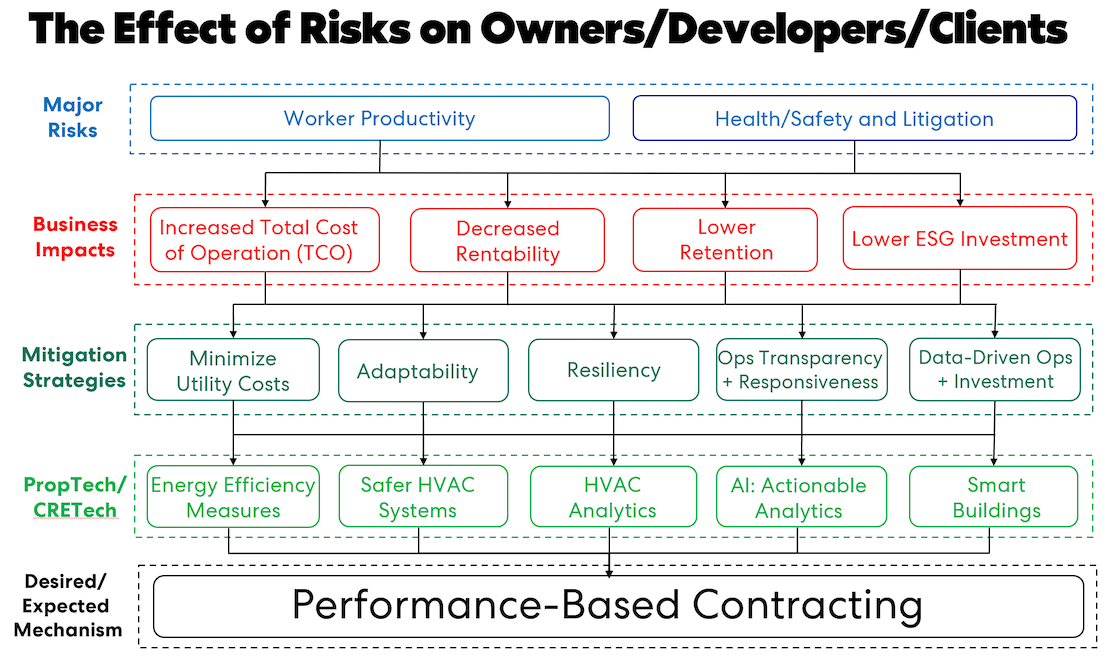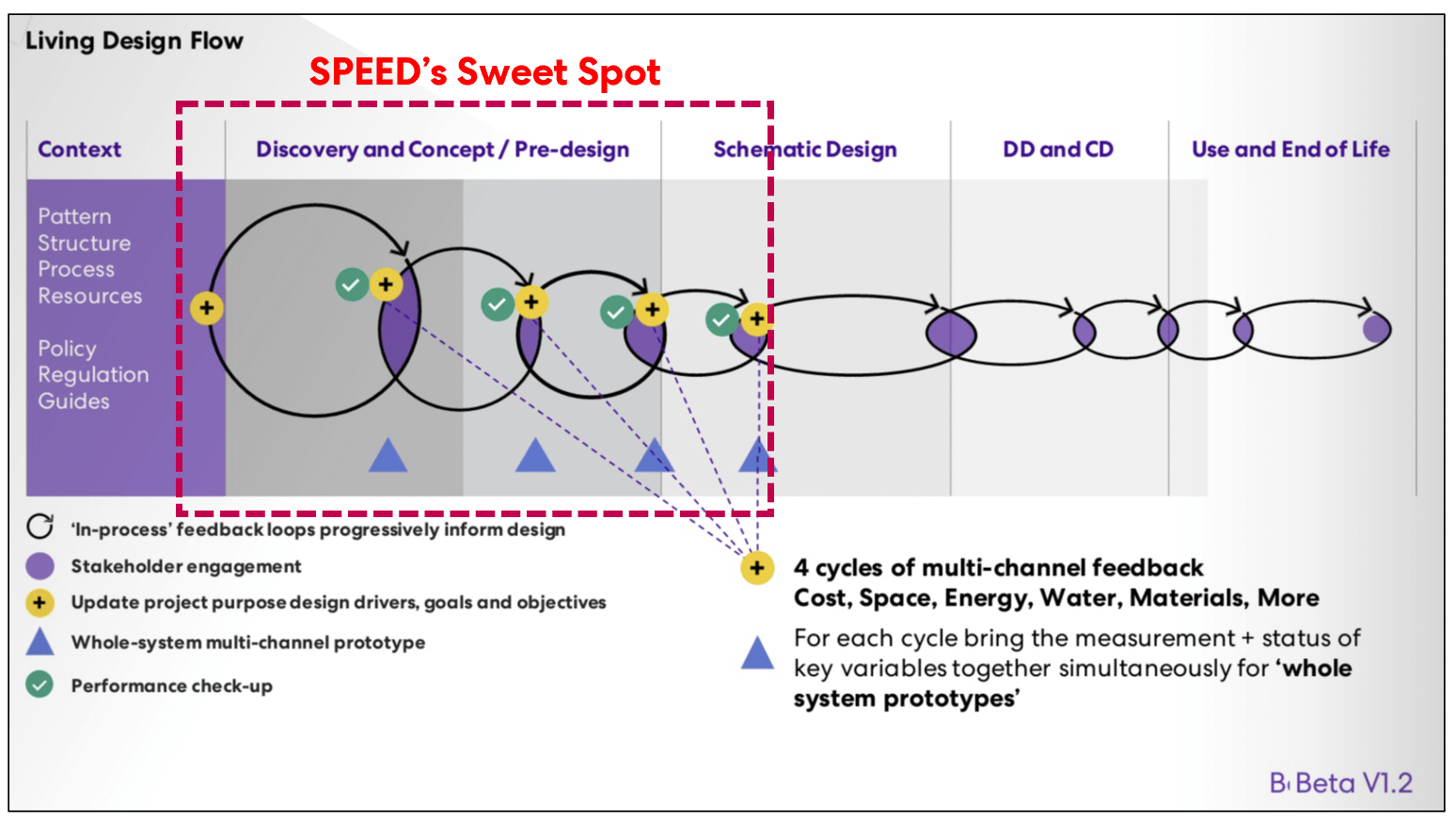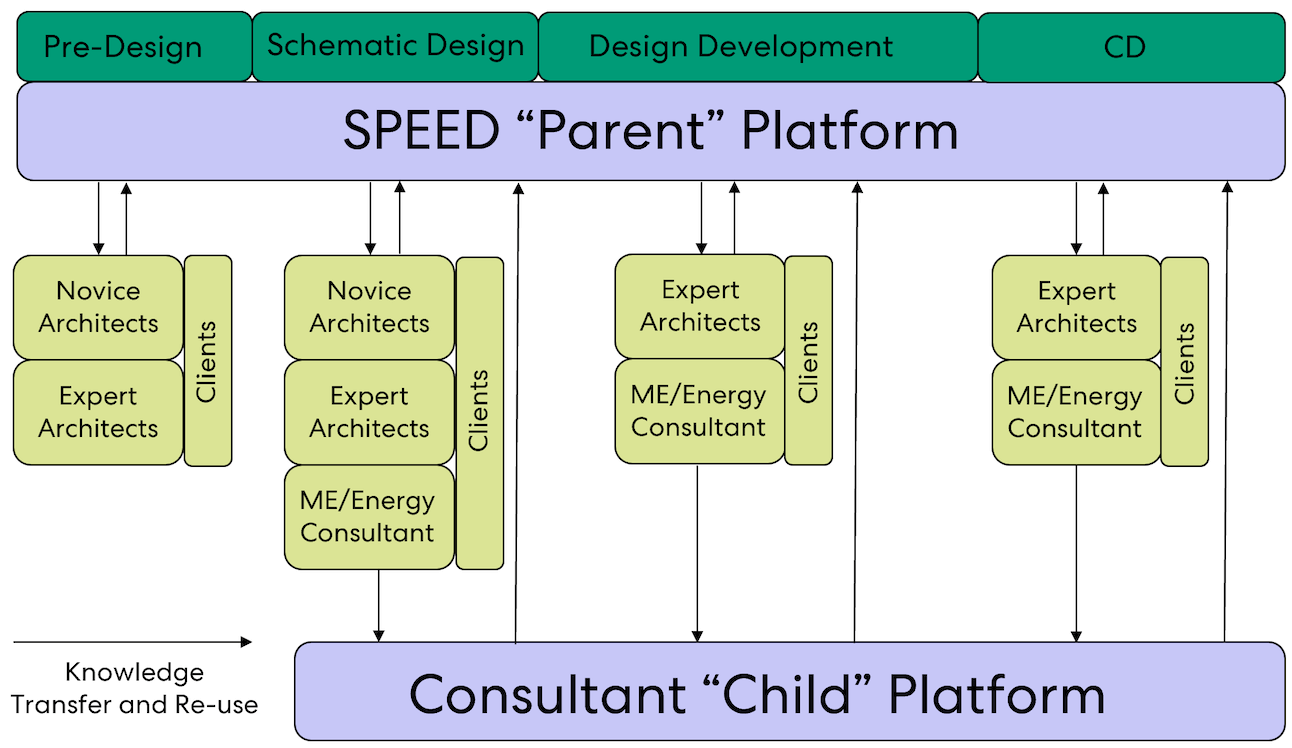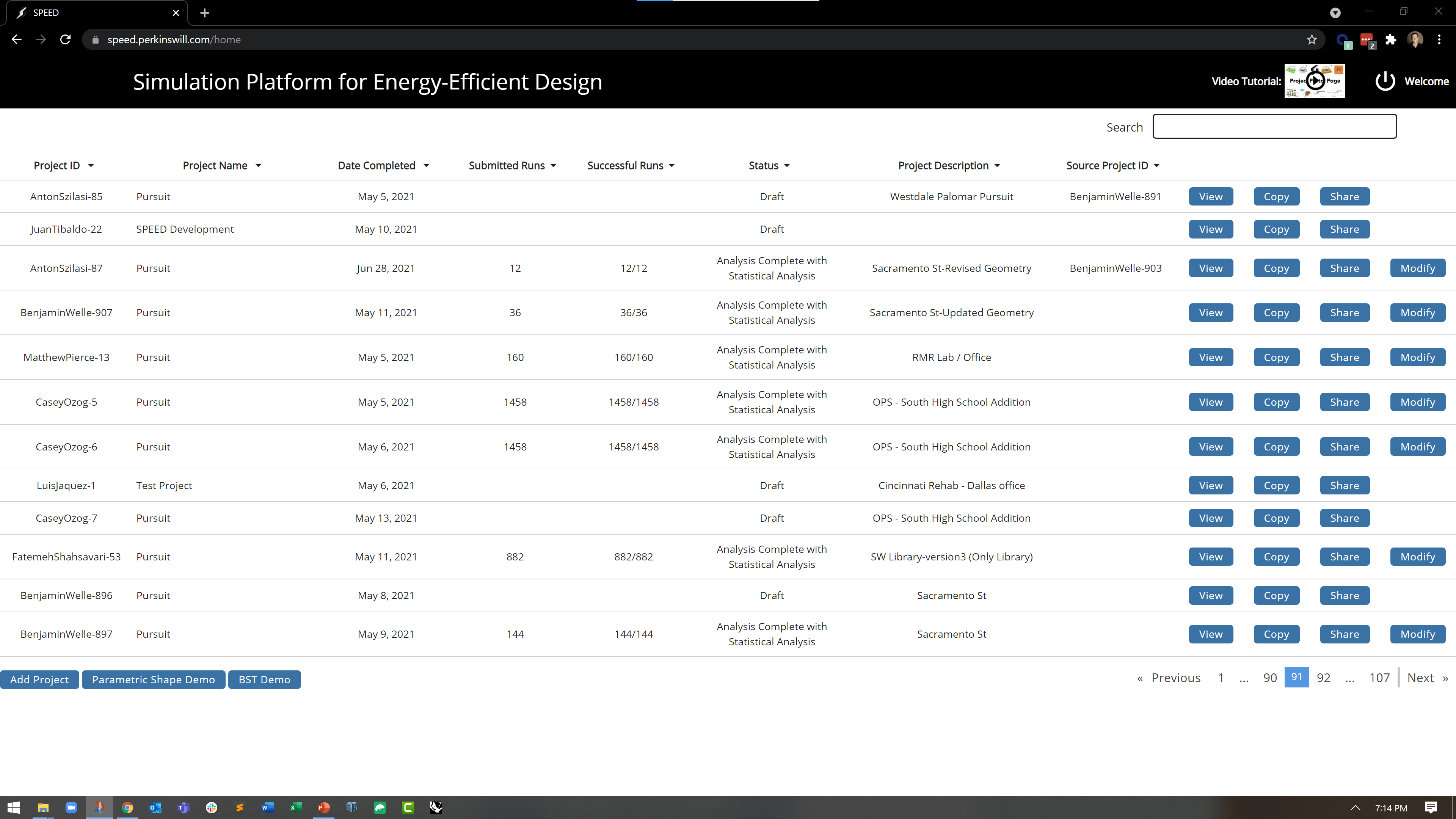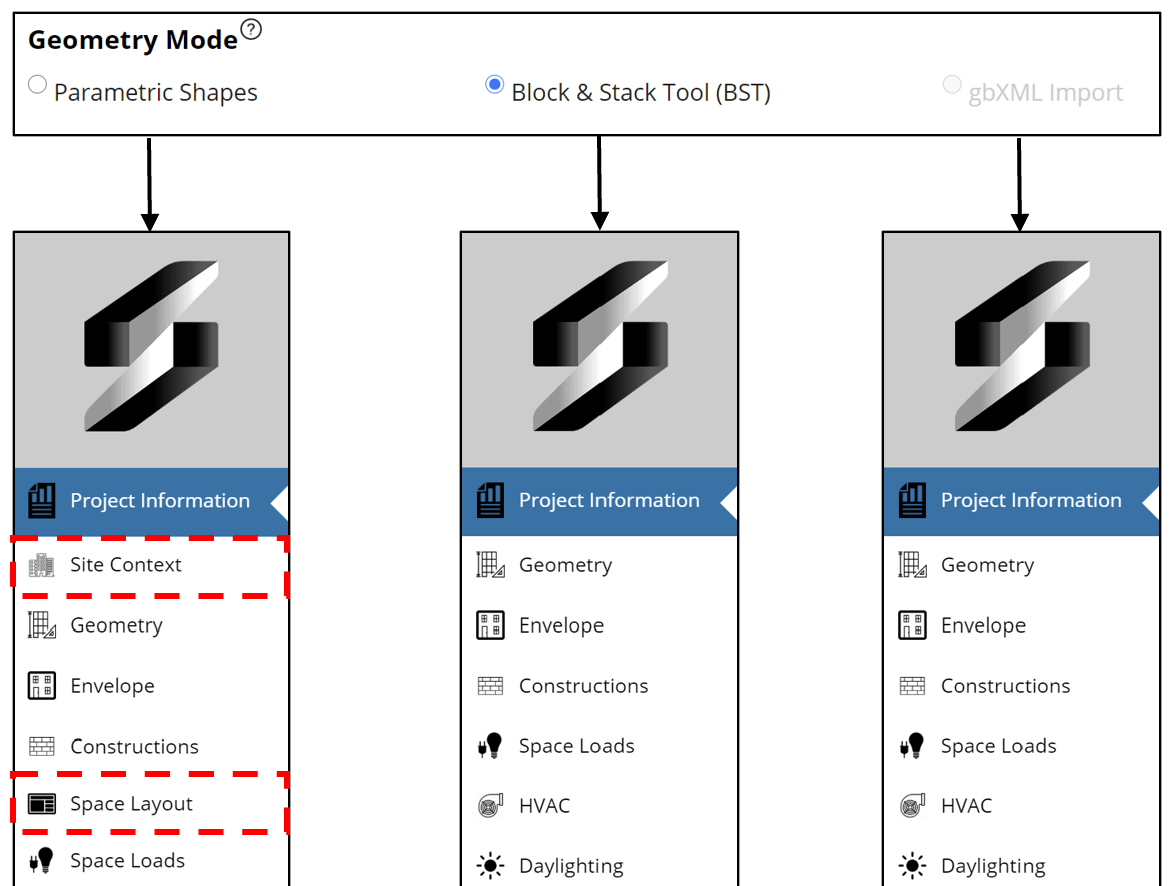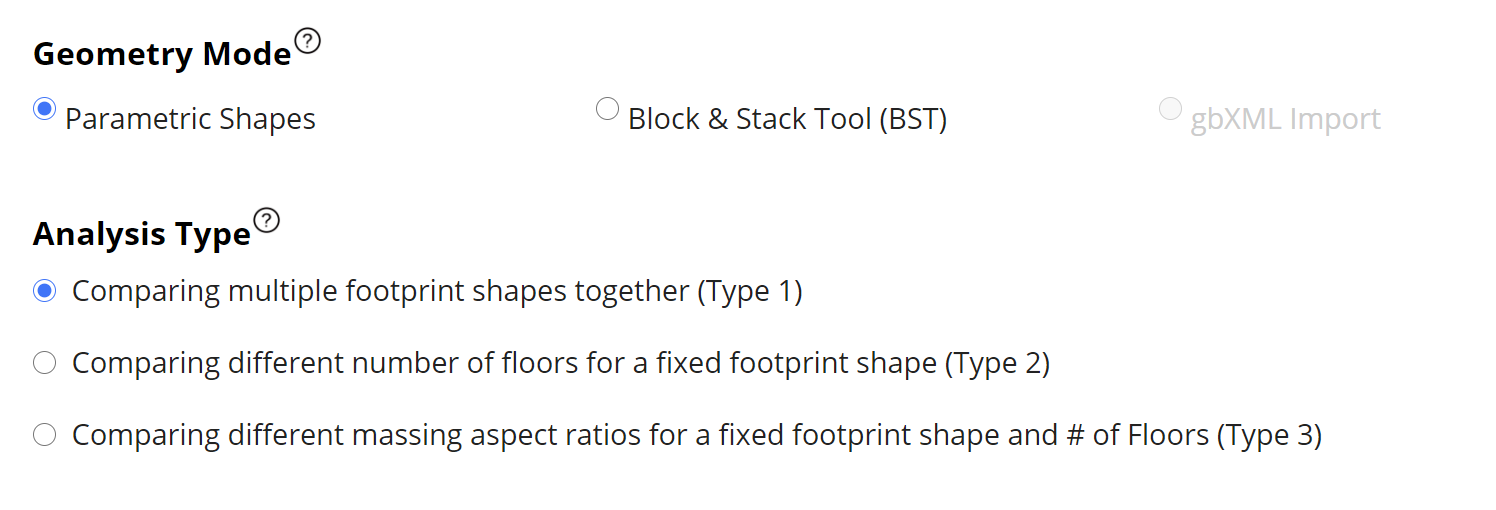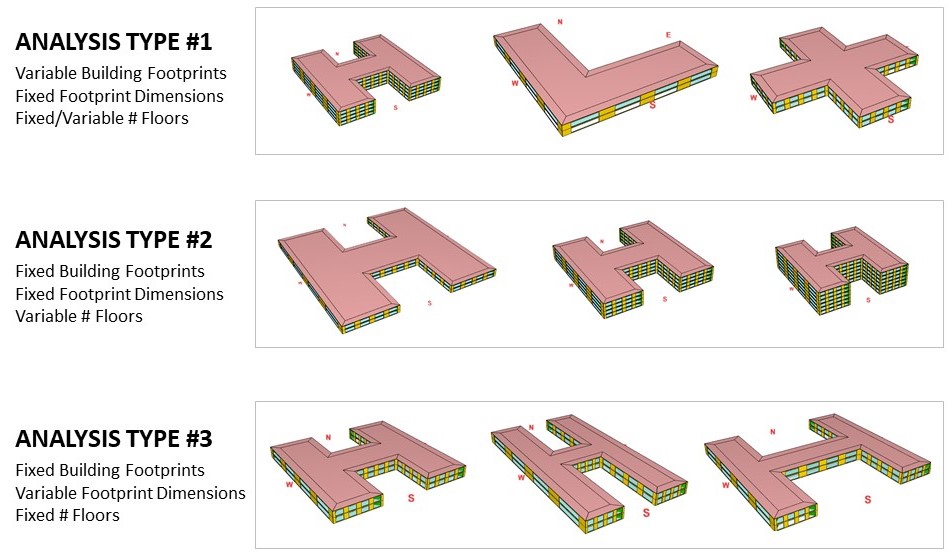Poor Early Design Process
Critical decisions on building form, massing, and envelope construction and configuration greatly impact a building’s energy and daylighting performance and must be made early in the design process. Using Building Energy Modeling (BEM) and other analyses, design teams can evaluate many different options to inform these decisions, reducing costly late-stage design modifications and maximizing building performance.
Unfortunately, incorporating BEM into the early stages of design is notoriously difficult. Turnaround times are short, few design options are considered, there are significant gaps in communication and coordination with consultants (if they are even on board yet), and budgets are tight—sometimes nonexistent if an architecture firm is bidding on a project.
Lack Of True Design Guidance
Most of use have seen the MacLeamy Curve before. It basically states that decisions made during the earliest stages of design are the most impactful and come at the lowest cost. However, the current state of most firms is to have simulation applied to these early stages at only a few points in the design process (at best). That does not provide effective design guidance. The ideal state is to run energy, daylighting, and other performance simulations quickly and often to understand the tradeoffs and dependencies. Only with this strategy can simulation provide true design guidance.
Inadequate Early Design Tools
Most of us know of various commercial software tools geared towards architects and early design. So, what’s the problem with many of these tools? Well, unfortunately the industry as a whole hasn’t progressed much in the past 15 years as others have. Here are some of the most common shortcomings….
Carbon Reduction Too Slow
We are losing the battle with climate change. Global carbon emissions grew by 240 million tons of CO2 per year during 2016-2019 compared to 2011-2015, and are expected to continue to grow to over this baseline for years to come. We are going backward not forward. A recent study showed that carbon dioxide emissions fell at roughly one tenth the rate needed worldwide to hold global warming well below 2°C relative to preindustrial levels. Mother earth only cares about absolute reductions.
The building sector is responsible for 32% of global energy use and 19% of energy-related greenhouse gas emissions. Recent studies show that the energy use and emissions from buildings might double or triple by 2050 due in large part to population growth. Current energy and carbon reduction targets in the AEC industry, regardless of geographic location or administering entity, are no where near as stringent as they need to be, and we aren’t even keeping up with those targets.
The gap between as-designed, as-built, and as-operated energy consumption and carbon emissions (operational and embodied) is massive for a wide range of reasons that are not fully understood. Some research estimates suggest an average gap between as-operated and as-designed energy consumption of 2.5 globally, though this may be conservative. Gaps for total carbon emissions are most certainly higher simply due to the greater complexity and less research in estimating embodied carbon. Even varying definitions of “net zero” or “carbon neutrality” and ways to manipulate those definitions muddy the waters.
We created SPEED to accelerate progress in technological solutions to improve building performance during early design for an industry deeply entrenched in slow-moving cultures. We are hopeful our work makes a difference in this phase of the building lifecycle and beyond.















